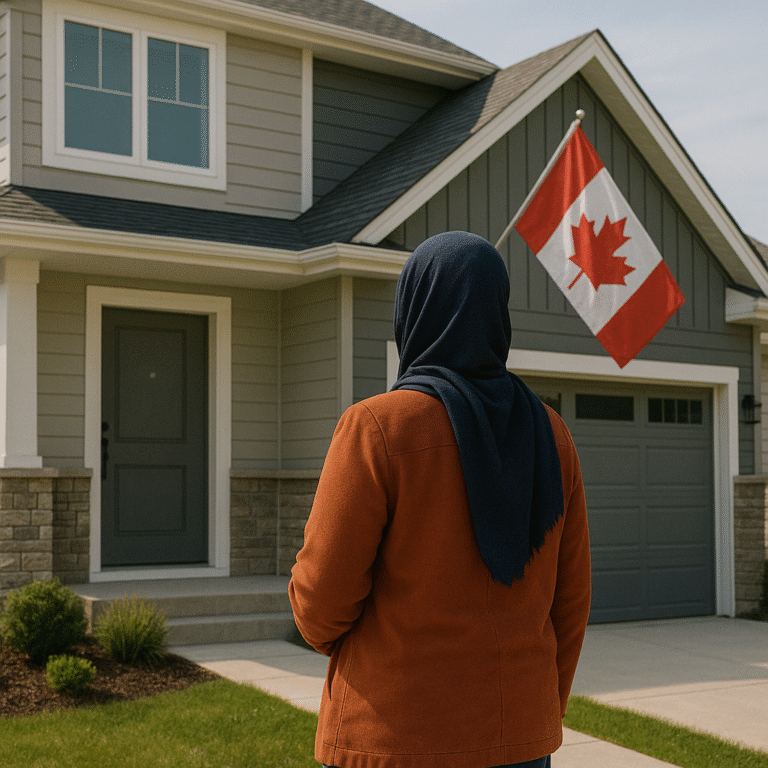
Mortgage Guide for Newcomers to Canada: Everything You Need to Know
Discover everything newcomers need to know about mortgages in Canada — eligibility by immigration status, down payment requirements, credit building tips, and special programs for immigrants.
Moving to a new country is a huge life event, and for many newcomers to Canada, buying a home is a key milestone. Navigating the Canadian mortgage landscape can be challenging, especially when you’re still settling into a new culture, job market, and financial system. This comprehensive guide is designed to walk you through all the essentials about mortgages in Canada for immigrants — including eligibility, down payment requirements, credit history building, and tips to improve your chances of mortgage approval.
Understanding Mortgage Basics in Canada
A mortgage is a loan that allows you to purchase a home by borrowing money from a lender, usually a bank or credit union. You repay this loan over time, typically in monthly installments over 15 to 30 years. The lender charges interest on the borrowed amount, and your payments are structured to cover both the principal (loan amount) and interest.
In Canada, mortgage approval depends on several factors, such as your income, credit score, debt-to-income ratio, down payment, and employment stability. Lenders want assurance that you can reliably repay the loan without defaulting.
For newcomers, some of these factors — like Canadian credit history or steady employment — might not be fully established yet, which makes understanding the mortgage system and preparing your application even more important.
Eligibility for Different Immigration Statuses
Your immigration status plays a crucial role in your mortgage eligibility and the conditions lenders apply. Here’s a detailed look at what newcomers with different statuses can expect:
Permanent Residents (PRs)
Permanent Residents are generally treated similarly to Canadian citizens by mortgage lenders. PRs are eligible for conventional mortgage products with competitive interest rates and down payment requirements.
- Down Payment: As low as 5% for first-time buyers.
- Documentation: Proof of PR status, employment, income, and credit history (if any) will be required.
- Challenges: If you have recently obtained PR status, you may have limited Canadian credit history.
Work Permit Holders
Temporary foreign workers on valid work permits can qualify for mortgages, but lenders often view them as higher risk.
- Down Payment: Typically 20% or higher.
- Employment Stability: Lenders require proof of stable employment and valid permit duration.
- Income Verification: Consistent income proof is essential.
- Options: Some lenders specialize in financing work permit holders, so consulting a mortgage broker is advisable.
Refugees and Protected Persons
While options exist, refugees and protected persons face more challenges securing mortgages.
- Down Payment: Often required to be 20% or more.
- Documentation: Requires thorough documentation proving status and income.
- Lenders: Limited number of lenders offer products for this group.
International Students
Mortgages for international students are rare due to lack of income and credit history, but some lenders offer specialized products.
- Down Payment: Usually 35% or more.
- Co-Signers: Having a Canadian co-signer improves chances.
- Proof: Enrollment status and future employment prospects are factors.
Down Payment Requirements: A Closer Look
The minimum down payment is a significant factor in mortgage approval and your monthly payments.
| Immigration Status | Minimum Down Payment |
|---|---|
| Canadian Citizens / PRs | 5% for homes ≤ $500,000; 10% for portion > $500,000 |
| Work Permit Holders | Typically 20% or more |
| Refugees / Protected Persons | Often 20% or higher |
| International Students | 35% or more |
Note: Down payments less than 20% require mortgage default insurance (CMHC insurance), adding to your costs.
Building Credit History in Canada
Credit history is one of the most critical factors lenders consider. A strong credit score reflects your financial responsibility and ability to repay debts.
Why Newcomers Lack Canadian Credit History
When you arrive, you have no Canadian credit footprint. Without this, lenders find it harder to assess your risk level.
How to Build Credit Quickly
- Secured Credit Cards: Start with a secured card where your credit limit is backed by a cash deposit.
- Regular Bill Payments: Pay your rent, utilities, phone, and credit card bills on time.
- Keep Balances Low: Use only a small portion of your available credit.
- Avoid Multiple Credit Applications: Each application can temporarily lower your score.
Building credit can take 6-12 months, but consistent effort can speed this process.
Using Foreign Income and Assets
Some lenders consider foreign income or assets for mortgage approval but often with stricter terms.
- Verification: You must provide proof, such as foreign tax returns, bank statements, or asset valuations.
- Down Payment: Larger down payments may be required.
- Lender Restrictions: Not all lenders accept foreign income; mortgage brokers can help identify willing lenders.
Mortgage Options for Newcomers
Conventional Mortgages
Available to PRs and some work permit holders with sufficient down payment and credit.
Newcomer-Specific Programs
Banks like RBC, Scotiabank, TD, and CIBC offer mortgage products tailored for newcomers, often requiring:
- No Canadian credit history
- Larger down payments
- Pre-approval based on foreign income
Tips to Improve Your Mortgage Application
- Get a Mortgage Pre-Approval: Understand your borrowing capacity and lock in rates.
- Consult a Mortgage Broker: Brokers can connect you with lenders who specialize in newcomer mortgages.
- Save for a Larger Down Payment: This lowers lender risk and can improve terms.
- Prepare Complete Documentation: Immigration papers, employment letters, bank statements, and credit reports.
- Avoid Debt Before Applying: Minimize new debt to improve debt-to-income ratios.
Regional Considerations
Mortgage rules and programs can vary across provinces and cities.
- Toronto and Vancouver: Higher prices and competition; specialized newcomer programs available.
- Calgary and Edmonton: More affordable markets with opportunities for newcomers.
- Quebec: Some unique regulations; PR status is particularly important.
Building Long-Term Financial Stability
Homeownership is just one step. Managing your mortgage, improving your credit, and financial planning are essential for success.
- Use budgeting tools.
- Pay mortgage on time.
- Monitor credit reports regularly.
- Consider mortgage refinancing when rates drop.
Conclusion
Buying a home as a newcomer to Canada involves unique challenges but is achievable with proper planning and guidance. Understanding eligibility, credit building, and mortgage options can help you make informed decisions and secure financing. Leverage government programs, specialized lender products, and professional advice to navigate the process confidently.
Stuck with a Mortgage Decision?
Don’t stress — our team is here to help. Reach out for free, no-obligation guidance.
Contact the Experts



